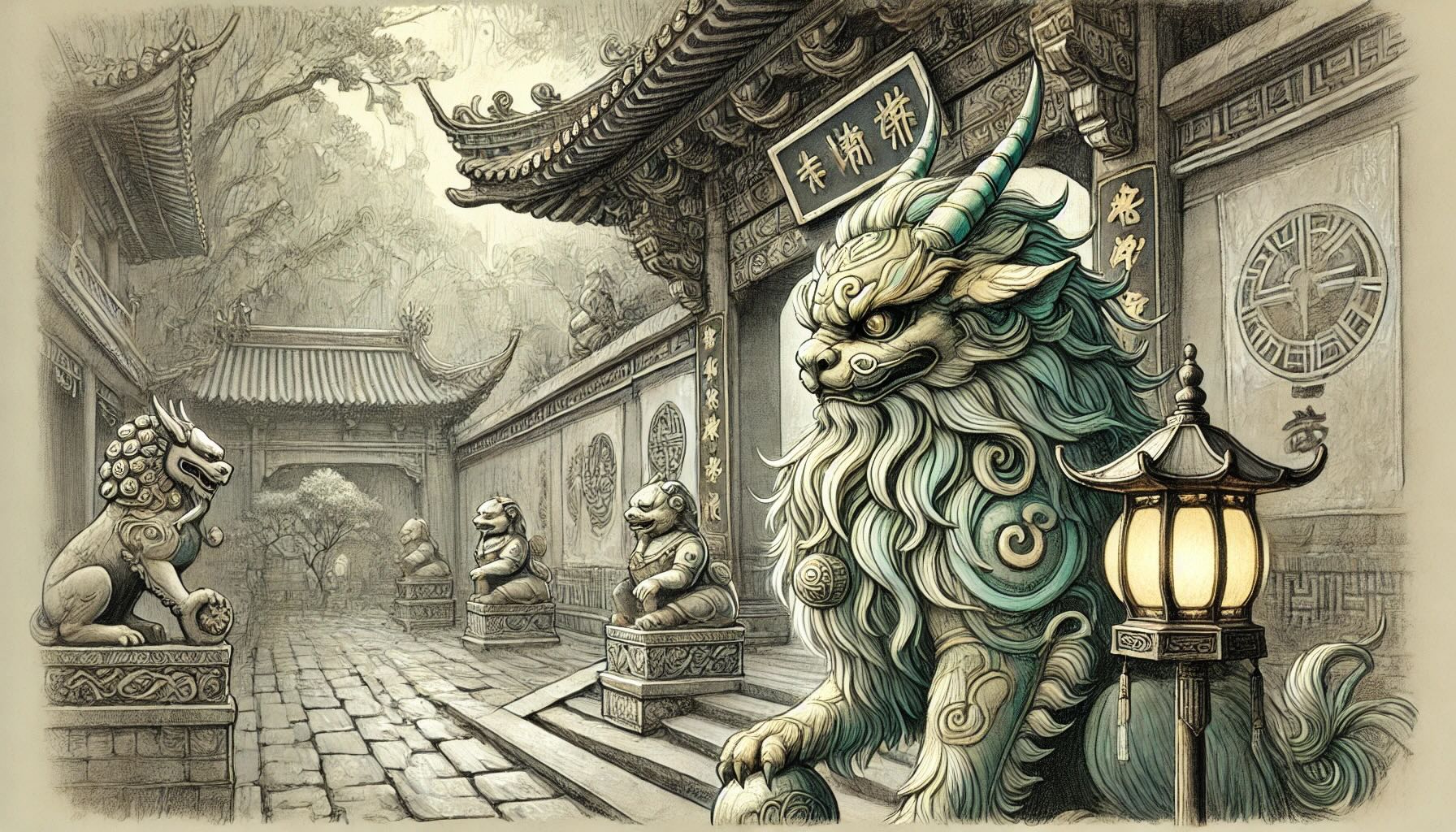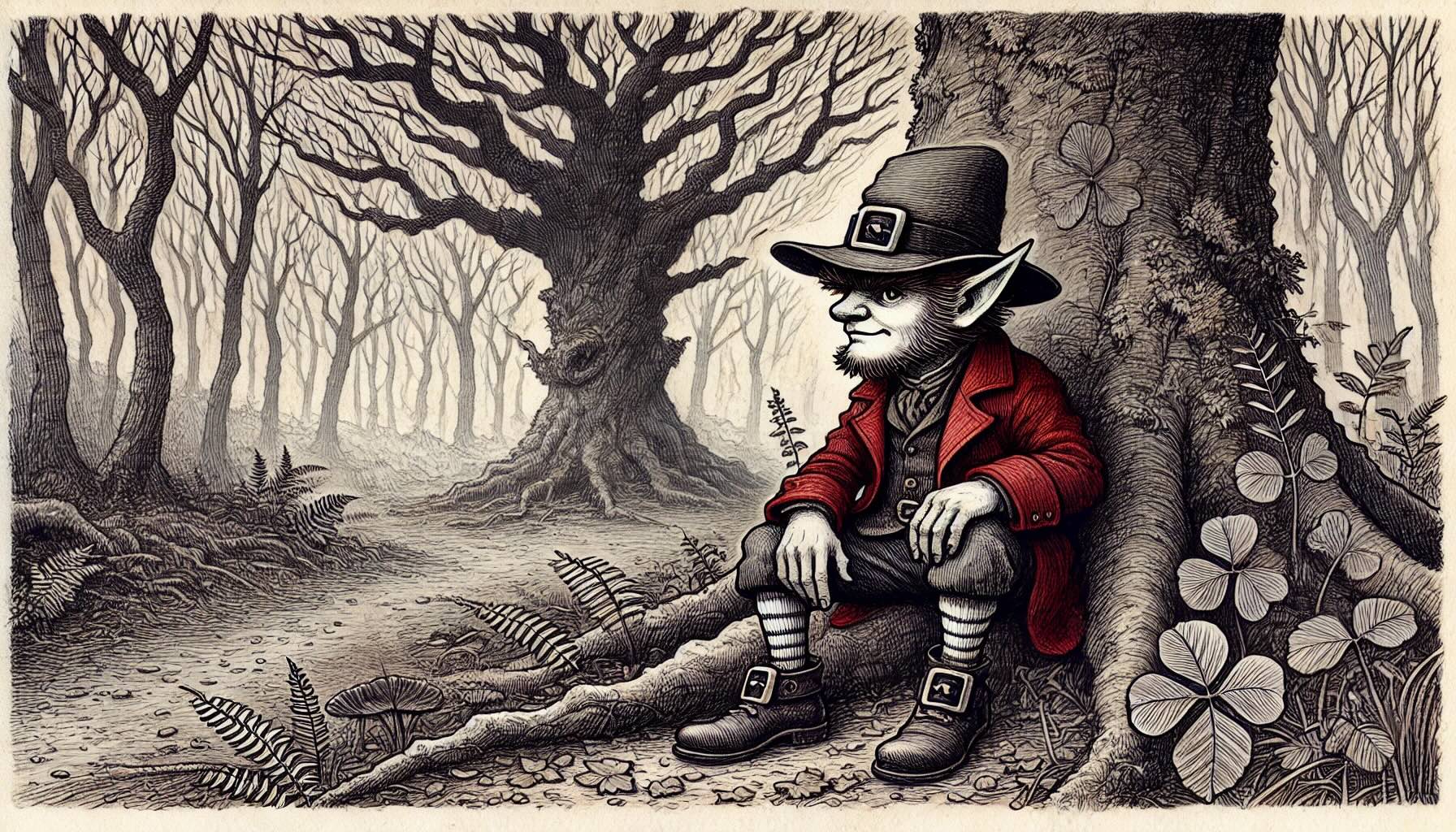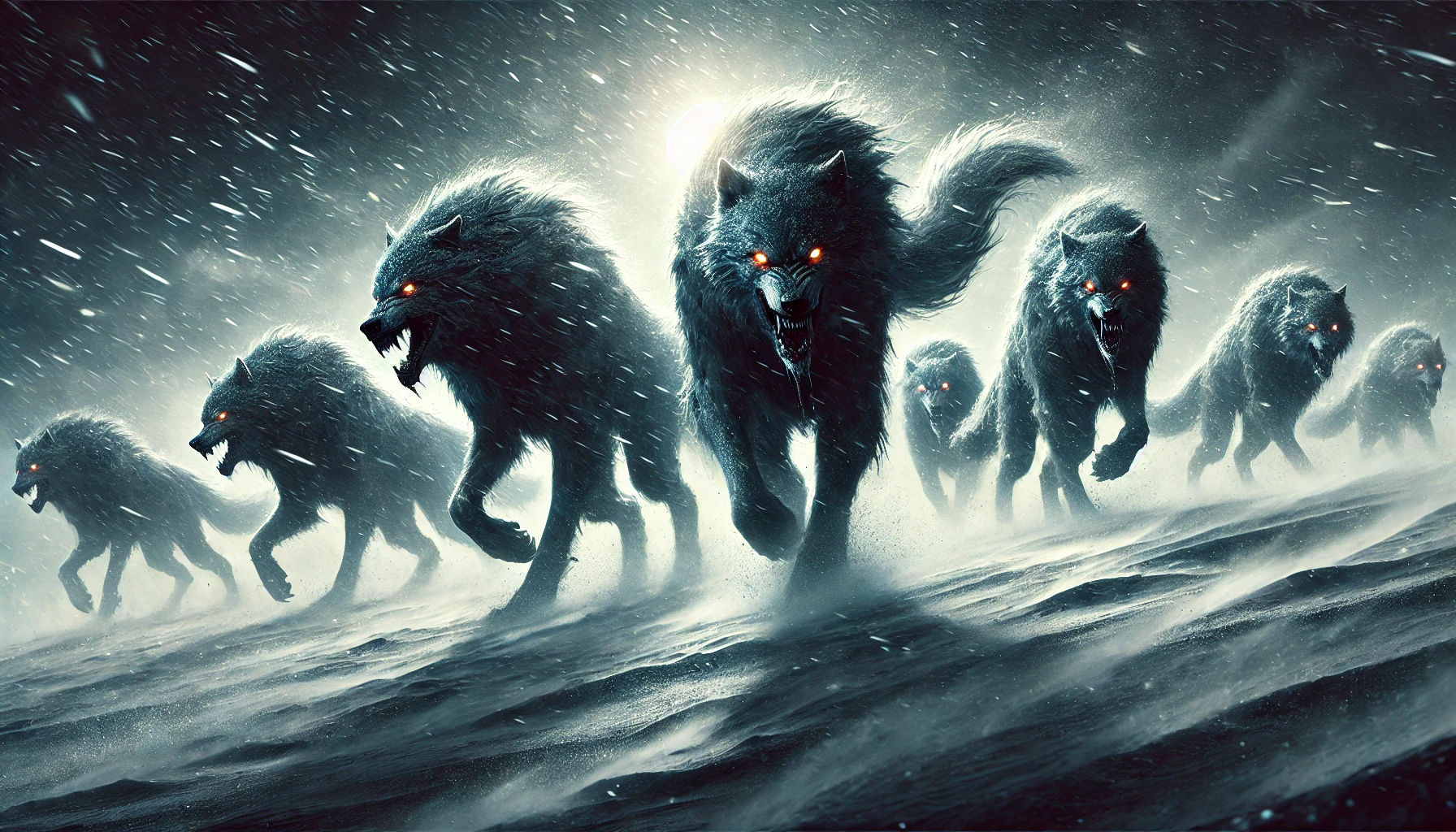The Beast That Comes with the Moon
Every year, as the Lunar New Year approaches, homes are swept clean, doors are painted red, and firecrackers explode in the streets. These traditions may seem like mere festivity to an outsider, but their origins lie in survival—because once, long ago, the Nian came.
The wind carries a faint, guttural growl through the valleys, unsettling the livestock before the villagers even sense the shift in the air. Described in hushed voices by the elderly and half-believed by the young, the Nian is no ordinary beast. It is a terror of the dark season, a creature that emerges when the old year dies, seeking to devour and destroy before the new year can begin. They say it slumbers deep in the mountains or beneath the sea, waking only when hunger calls it forth. And when it comes, villages fall silent, doors are locked, and prayers are whispered in the dim glow of lantern light.
A Monstrous Visage
The Nian is unlike any earthly predator. Its body is enormous, covered in thick, coarse fur that shifts in hue like storm-lit clouds. Some say it looks like a great lion, others swear it has the twisted horns of a dragon, curling like frozen rivers. Its eyes glow an unnatural yellow, gleaming with an intelligence that makes it all the more dangerous.
Its jagged, gnarled teeth seem endless, and its claws carve through stone with ease. The air turns heavy and still, as if even the wind dares not move in its presence. Those who have seen its tracks speak of something impossibly large, prints deep enough to mark the earth for weeks after it has passed.
But the worst part? The Nian does not kill for sport. It kills because it is hungry.
The Endless Hunger
The Nian feeds at the turning of the year, drawn by the scent of life and the warmth of celebration. Many once tried to appease the beast with gold, fruit, or incense, but these gifts were always ignored, their altars shattered in the morning. It cares not for these gifts—it hunts only for living flesh. It hunts cattle, pets, and sometimes, people.
The stories tell of entire villages falling to its hunger before the traditions were known. Doors left unguarded, homes without their protective symbols—these were the ones it devoured first. The beast would descend from the mountains or rise from the depths, its massive form moving with terrifying swiftness, snatching livestock and children before vanishing into the dark.
How It Was Defeated—Or Was It?
For generations, the Nian returned every year, an unstoppable force of destruction. That was until the people learned its weaknesses.
- Fireworks and Loud Noises: The Nian, for all its power, is deeply afraid of sudden, sharp sounds. The crackling of firecrackers sends it fleeing, its ears too sensitive to bear the assault.
- The Color Red: It despises red, though no one knows why. Red banners, red clothing, and red-painted doors drive it away.
- Bright Lights: The beast thrives in darkness, its eyes accustomed to the shadows. Lanterns and fires disrupt its vision, making it hesitant to approach.
Armed with this knowledge, the people fought back. Red lanterns were hung at every door. Drums and gongs were struck with all the force they could muster. Explosions of firecrackers lit up the night, creating a storm of sound that sent the Nian fleeing. Some say it returned to the mountains, others that it slunk back into the sea.
But no one believes it is truly gone.
Other Tales of the Nian
Some say the Nian was never alone—that its kin still lurk in the forgotten corners of the world. Others whisper that lesser Nian-like creatures still lurk in the deep forests and forgotten caves, waiting for their moment to strike. Others speak of the Nian retreating into deep mountain caves, waiting for the day when the firecrackers go silent and the people forget their defenses.
Signs of Its Return
The Nian is rarely seen—but those who dismiss it may not be looking closely enough. Whispers persist of strange disappearances, of clawed tracks appearing where none should be. The signs are there for those who dare to notice:
- An eerie silence before the new year: No wind, no birds, no distant village sounds—only an unnatural stillness.
- Strange claw marks on trees or rocks: Deep, deliberate scratches that do not match any known animal.
- Unexplainable disappearances of livestock: Entire farms left in eerie silence, with doors shattered and fences broken, yet not a single body to be found.
- Children speaking of glowing eyes in the dark: Dismiss them at your peril. The young often sense what adults refuse to see.
A Word of Caution
Even now, as firecrackers burst and red banners wave, people follow these traditions—not just for celebration, but as a safeguard. Few dare to test what happens if they are ignored.
So when the new year arrives, celebrate well. Light your lanterns, wear your red, and make as much noise as you can. Some whisper of a village where firecrackers failed—and by morning, not a soul remained. The Nian still prowls, lurking in the dark places of the world. Some say it is already here, moving in the shadows, waiting for a moment of weakness. If you listen closely, you may hear its breath in the wind.
Stay vigilant. Stay safe. But if the firecrackers fail, and the silence lingers too long—run.



